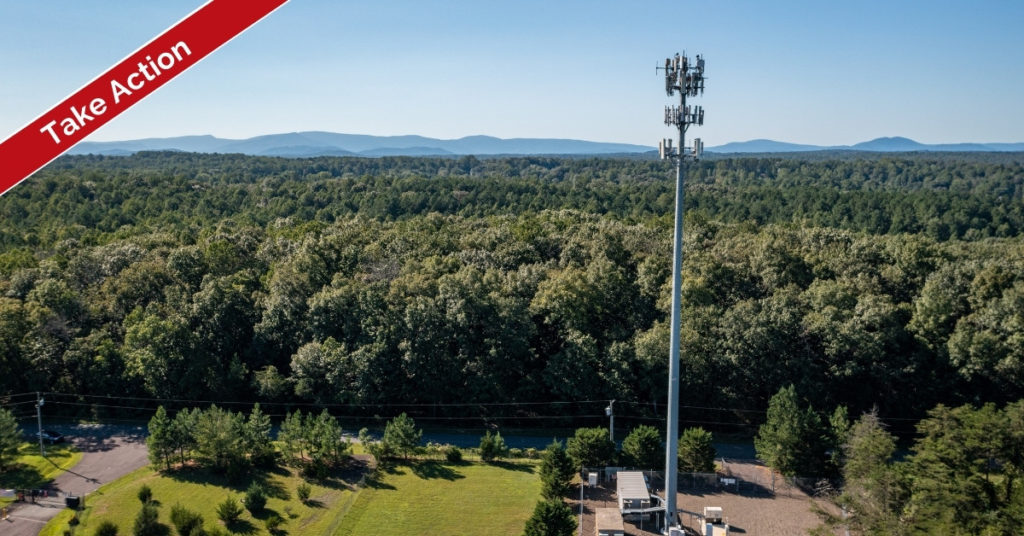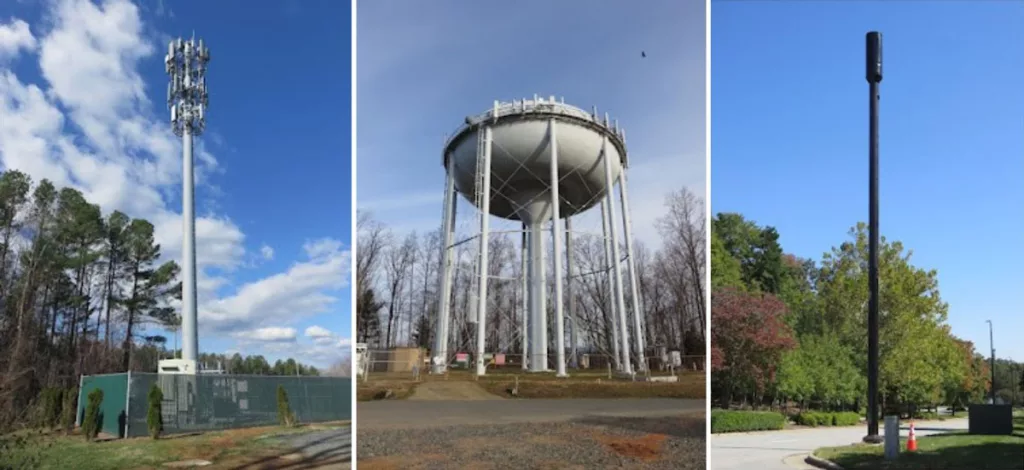The following text was sent out via email on August 28, 2024. Sign up for PEC email alerts →

Dear Supporter,
Last August, many of you participated in Albemarle County’s Personal Wireless Service Facilities ordinance update survey. Now the County is in the final stage of updating the ordinance, which sets standards for the design and siting of cell towers. These regulations are important because they can help plan for infrastructure that improves cell phone coverage while protecting the natural beauty and open space that people love about this place.
Next Wednesday, Sept. 4, the Board of Supervisors will hold a public hearing to vote on the updated ordinance. PEC is supportive of some of the changes that the Board has proposed, but concerned about some of the protections that have been removed in the draft.
Until recently, PEC, along with the Planning Commission, had been supportive of the draft ordinance, which we believe would have been mostly successful in balancing service needs with other features communities value, such as scenic byways and rivers, parks and recreational resources, rural villages, historic resources and the lands within the viewsheds of Shenandoah National Park.
The Planning Commission approved that draft ordinance in their last session, but after hearing the same presentation from County staff that the Planning Commission did, the Board of Supervisors deferred voting and directed staff to make changes to the draft ordinance.
Weigh in with the Board
Let the Albemarle County Board of Supervisors know that cell towers should be reviewed as special use permits in Scenic Byways and Highways and Historic Areas.
- Submit Comments in Writing: Public comments will be accepted in writing at the public hearing or by email. Submit your email comments to BOS@albemarle.org and cc PlanningCommission@albemarle.org.
- Speak Up on Wednesday, Sept. 4, at 6 p.m.: Community members have three minutes to speak directly to the Board of Supervisors at the start of the public hearing. Come to Lane Auditorium in the County Office Building or comment virtually to have your voice heard.

Ordinance Definitions:
County regulations are based on which tier a cell facility fits into. Tier I refers to facilities located within buildings or mounted on the exterior of buildings and structures. Tier II refers to treetop facilities with a height limited to 10 feet above the nearby trees (though the County has proposed increasing it to 30 feet). And Tier III refers to cell towers that do not fit into either category (often taller and larger towers).
“Avoidance Areas” are areas with resources that could be harmed by the siting of personal wireless service facilities. Current Avoidance Areas include ridge lines where poles would be visible, parcels within historic districts, and locations within 200 feet of scenic roads.
Finding Common Ground
Cell service is a modern necessity, but there are multiple ways to increase levels of service without adversely impacting important aspects of community character. Balancing communities’ priorities by integrating design elements into conversations about coverage issues is central to our concerns and recommendations. With this, the Board has made several revisions, including two that we have concern about and two that we support.
Concerned about:
Removing both Scenic Highways and Byways and Historic Areas as Avoidance Areas is in direct conflict with the county’s current 2015 comprehensive plan goals and objectives for Historic, Cultural, and Scenic Resources, which commit to protecting these values and recognizing them as part of the County’s identity. It also doesn’t reflect much of the feedback received from the public survey about the ordinance last August and downplays the contribution these areas play in the rural character and tourism economy.
If the County removes the Scenic Highways and Byways and Historic Areas areas from the list of Avoidance Areas, it is critical that Tier II (treetop) and Tier III towers are still approved by special use permit when facilities are proposed in these areas, as they are now. The special use permit process, versus by-right approval, provides opportunity for better siting, better design, and community engagement before the cellular service provider builds it.
Designing less visible towers sited in less sensitive areas will better ensure the Community Facilities goal of improving personal wireless services is still reached.
Supports:
PEC strongly supports the Board of Supervisors’ addition of biodiversity and forestal areas as Avoidance Areas. And while not yet proposed as a directive, PEC encourages that siting be avoided in Mountain Protection Areas too. These are sensitive areas with limited human interaction; leaving them undisturbed, the County recognizes, helps prevent adverse impacts to water, soil and forest resources, plant and animal habitat, and scenic values associated with the mountains and their ties to tourism. Adding these areas is therefore in line with Supervisors’ directive to add conservation focus areas into the Avoidance Areas.
The current ordinance demonstrates ways the County was already trying to balance community values, like requiring that cell tower colors fit in with surroundings, requiring plans for protecting existing trees on sites, requiring public hearings for larger Tier III approvals and encouraging service providers to share towers so there aren’t more than necessary.
Reach out to the Board of Supervisors to let them know you’d like to continue to see this balance, and have a voice before facilities in historic and scenic areas are built.
Thank you!
